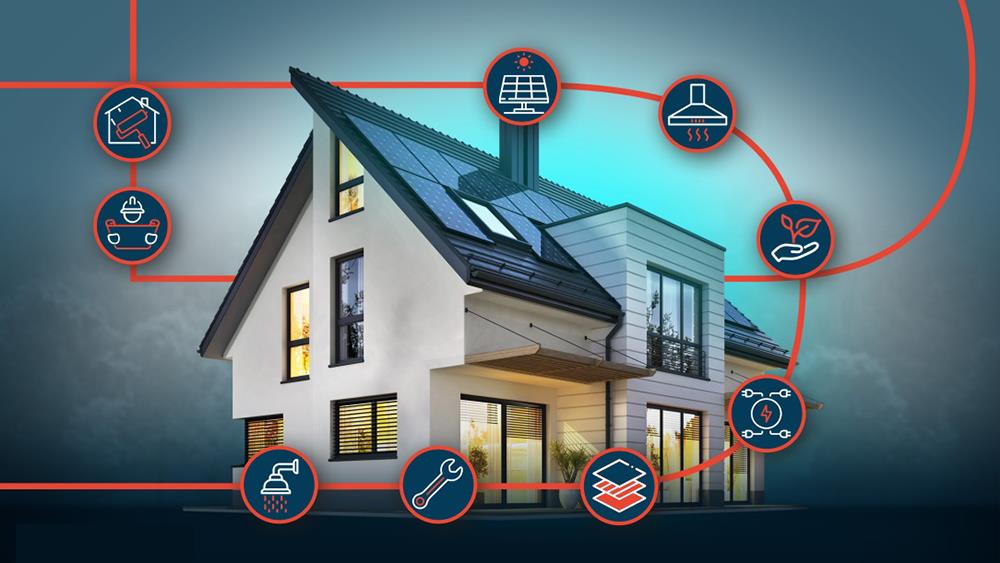

New data shows that homeowners across the country are turning to solar panels and insulation upgrades to combat high energy costs.
According to an analysis of planning applications conducted by Barbour ABI, the number of planning applications citing insulation has more than doubled since 2019, and those citing solar panels have risen threefold.
Not only is this saving money on heating, but evidence suggests energy efficiency upgrades are now increasing house values, even as the housing market struggles.
This trend follows the disruption of the pandemic, which had led to a surge in home improvement in 2019 and 2020, as homeowners spent savings on improving outside space and reconfiguring internal space to make way for home working.

Barbour ABI Chief Economist Tom Hall said: “The latest data reveals the exceptional impact on the home-improvement market created by an extraordinary series of economic and social disruptions.
“Covid saw home improvement applications boom as people looked to extensions, home office improvements and garden upgrades to improve home working conditions – activity has fallen over the last year but overall numbers remain above the pre-pandemic trend.
“The surge in solar panel installations and the rapid rise in insulation work suggests that the cost savings from reduced energy bills and increasing evidence of an energy efficiency premium is now tempting for better-off homeowners.
“Meanwhile, the pressure on the UK to meet its net zero targets is likely to grow, prompting the use of incentives or regulation to encourage reluctant owners to improve the energy efficiency of their homes, so we expect this trend to continue.”
St Albans in Hertfordshire has topped the league for the most home improvement planning applications in the UK.
Looking at the hottest spots for home improvement, the Top 25 table shows that districts in London’s commuter belt dominate. The East of England and Southeast regions each fill nine slots on the table, with London taking five. The remaining two places in the top 25 are taken by Uttlesford, near Stansted in Essex, and the Cotswolds, in Gloucestershire.
The Top 5 districts include St Albans, Three Rivers, Elmbridge, South Cambridgeshire and Epping Forest.
But while the sharp rise in the cost of living may have prompted many households in better-off communities to invest, the same pressures are restricting spending in poorer areas.
All regions saw a sharp drop of 19% from a peak of planning applications in 2021, but districts in the north of Britain fill out the bottom of the league while the Northeast is the hardest hit region, dropping 26%.
Hall continued: “There can be little doubt that the home-improvement market will suffer as the economy weakens and the cost-of-living crisis bites deeper into the pockets of households.
“But counter to this, the case for investment in improvements that reduce the cost of running a home is increasingly making sense for those who still have money to invest in their properties.
“However, there is evidence to suggest the benefits will not be felt evenly throughout Great Britain. Less-well-off areas will struggle to fund upgrades of any sort in the current economic climate, leaving them at the mercy of energy markets.”